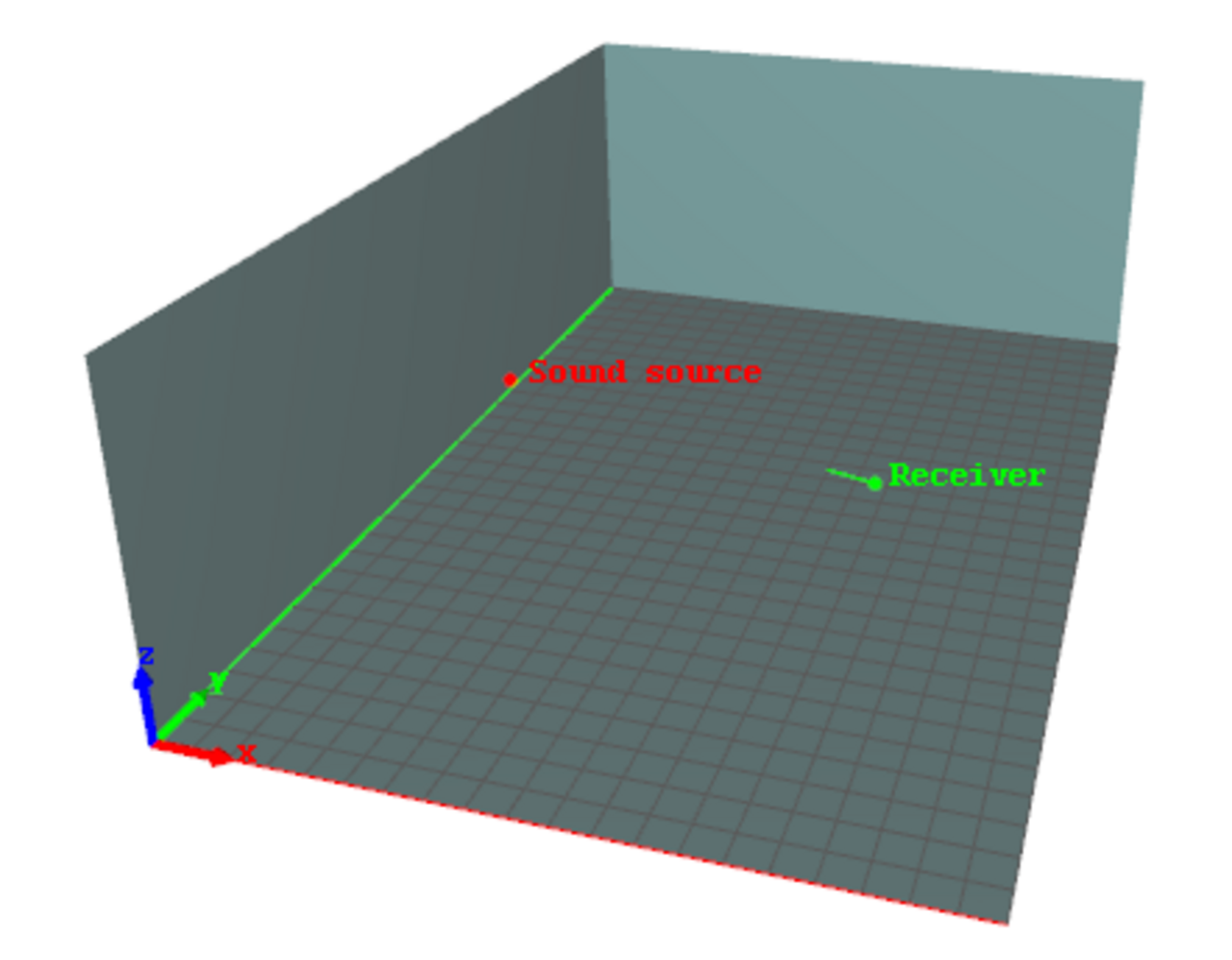All elements of this simulation are licensed under Licence Creative Commons Attribution 4.0 International License.
Low room with mixed diffuse-specular reflection and non-uniform absorption
Description
Academic case: Low room (30m x 20m x 10m) with mixed reflection (varying scattering coefficient ) and non-uniform surface absorption, with a single source and 1 punctual receiver.
What is tested?
Comparison between SPPS and the results obtained using a hybrid method (image-sources and radiosity) as described in [Korany, 2001].
[Korany, 2001] N. Korany, J. Blauert, O. Abdel Alim, Acoustic simulation of rooms with boundaries of partially specular reflectivity, Applied Acoustics, Volume 62, Issue 7, July 2001, Pages 875-887, ISSN 0003-682X, dx.doi.org/10.1016/S0003-682X(00)00075-X.
Reference
CAUTION - The following results present comparisons between numerical simulations carried out with I-Simpa and 'reference' data available in the scientific literature.
- It is difficult to prejudge the concept of 'reference'. The deviation between the simulations and the reference data that can be observed do not necessarily call into question the corresponding simulations but can also be associated with other sources of deviation (modeling assumptions, numerical instabilities, experimental uncertainties, etc.).
- Note also that these comparaisons can also show the limitations of some numerical codes.
What is tested? (copie 1)
Comparison between SPPS/TCR simulations and results from the NORMAL code described in [Yang, 2000].
[yang, 2000] L.N. YANG, B.M. SHIELD, DEVELOPMENT OF A RAY TRACING COMPUTER MODEL FOR THE PREDICTION OF THE SOUND FIELD IN LONG ENCLOSURES, Journal of Sound and Vibration, Volume 229, Issue 1, 2000, Pages 133-146, ISSN 0022-460X, dx.doi.org/10.1006/jsvi.1999.2477.
Description
Academic case: Long room (8m x 100m x 9m) with specular reflection (no diffusion) and 10% uniform surface absorption, with a single source and 6 punctual receivers.
Reference

Reference


All elements of this simulation are licensed under a Creative Commons Attribution 4.0 International License.
Results
Reverberation time (RT30)
The SPPS code shows a similar behavior and a perfect agreement for the reverberation time (RT30), i.e. a decrease of the RT30 with an increase of the scattering coefficient from perfectly specular to perfectly diffuse, with the hybrid method. As expected, whether for Sabine or Eyring formulae, the classical theory of reverberation is not able to predict the reverberation time in such room (disproportionate with a non-uniform absorption).
Calculation parameters
Reference
| Parameters | Value |
|---|---|
| Active calculation of Atmospheric absorption | NO |
| Active calculation of diffusion by fitting objects | NO |
| Active calculation of direct field only | NO |
| Active calculation of transmission | NO |
| Calculation method | Energetic |
| Limit value of the particle extinction | 5.0 |
| Number of sound particles per source | 5 000 000 |
| Number of sound particles per source (display) | |
| Random initialization number | |
| Receiver radius | 0.31 |
| Simulation length (s) | 1.500 |
| Time step (s) | 0.002 |


